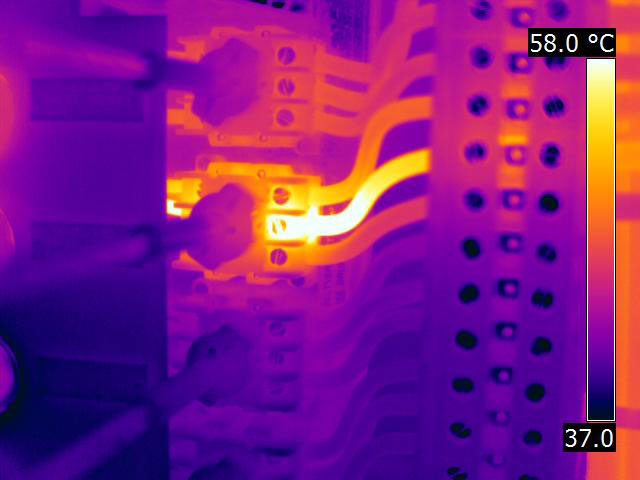
What Is Thermal Imaging – Switchboard Scanning?
Thermal imaging is a non-invasive diagnostic technique that allows us to visualise and quantify changes in the surface temperature of electrical equipment. An infrared camera converts infrared radiation (heat) emitted from the surface of electrical equipment into electrical impulses. These impulses are mapped as colours which represent the various temperatures.

Why Is Thermal Imaging Important To Your Business?
Thermal imaging identifies equipment flaws and pinpoints any hot spots often invisible to the naked eye. When parts of your electrical systems begin to have problems, they give off heat usually a sign of electrical resistance or excessive friction. Abnormal temperatures can be easily identified and published.

What Are The Benefits Of Thermal Image Scanning?
Using thermal imaging as a vehicle to facilitate early detection of equipment failure will directly benefit you as follows:
- Cost savings – No other preventative method is as cost effective as thermal scanning. If you take the necessary precautions, thermal scanning will assist you in minimising your downtime, protecting your business.
- Non-destructive testing – We can easily identify heat related external anomalies without having to disconnect or destroy any equipment. We can also usually identify internal equipment failure.
- Minimises workplace hazards e.g. Reduces the possibility of fire
- Early detection of any potential faults
How Often Do Switchboards & Other Electrical Equipment Need To Be Scanned?
Frequently. The way you learn there is a problem in your electrical system is when it fails. The downtime can be costly and devastating to your business. Before an electrical component burns up, it heats up. Early detection with infrared thermal scanning detects growing problems before they cause a
system failure or fire. Maintenance personnel can correct the problem before the component fails.
Infrared thermography is used to perform inspections on electrical equipment because excess resistance on electrical apparatus indicates electrical faults such as:
- Loose connections
- Overloads
- Imbalanced circuits
- Faulty equipment
- Damaged switches
- Faulty fuses
- Other unwanted electrical conditions

Why Should Thermal Scanning Be Included As Part Of Your Regular Planned Maintenance?
A thermographic scan detects problems that you can fix during scheduled maintenance windows and/or downtime. This enables your system to operate at maximum efficiency, improving the reliability and cost-efficiency of your business.
Thermal imaging should be used as a vehicle to facilitate early detection of equipment failure:
- Ensures a higher level of workplace safety
- Reduces the possibility of fire
- Reduces the chance of critical downtime
- Reduces the possibility of loss of production
- Assists you in meeting your OH&S guidelines
- Assists you in meeting your insurance obligations
Insurance companies recommend performing this type of diagnostic survey regularly. It is mandatory in some policies, as thermal imaging is recognised as a brilliant method of fire prevention.